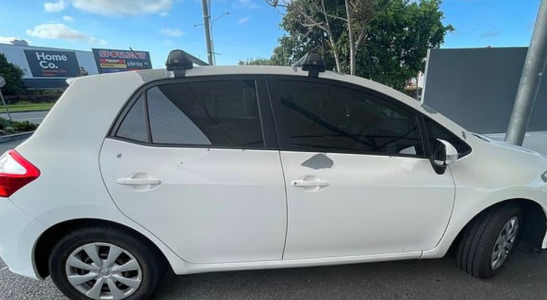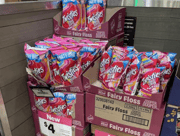Vehicle owners face potential risk from shocking manufacturing issues amid class action
By
- Replies 5
If you drive a popular white hatchback from the early 2010s, it might be worth checking the condition of your paintwork more closely—some owners have noticed issues that weren’t there before.
A rising number of drivers have come together to pursue legal action, claiming that a long-hidden flaw may be to blame for their cars’ premature wear and tear.
The heart of the complaint is peeling paint—specifically, white paint with the factory code 040, applied to Corollas manufactured between 12 July 2010 and 30 September 2014.
Owners say that, after a few years in the Aussie sun, their cars’ paint starts to bubble, flake, and peel away, leaving unsightly patches and exposed metal.
Not exactly what you expect from Australia’s best-selling car brand!
Photos shared in a Facebook group dedicated to the issue (which now boasts over 7,000 members) show large sections of paint missing from bonnets, roofs, and doors.
For many, it’s not just a cosmetic problem—it’s a blow to the pride of ownership and, potentially, the resale value of their vehicles.
Law firm William Roberts is leading the charge, filing a class action in the Federal Court on behalf of affected Corolla owners.
Their argument is that Toyota breached Australian Consumer Law by selling cars that weren’t of 'acceptable quality' and by failing to disclose the risk of paint peeling to buyers.
Under Australian Consumer Law, vehicles sold from 2011 onwards must meet certain standards, including being durable and free from defects.
If a car falls short, consumers are entitled to a free repair, replacement, or refund, depending on the severity of the problem.
The lawyers allege that Toyota knew about the paint issue but didn’t warn customers or take adequate steps to fix it.
Instead, many owners only discovered the problem after the paint started to peel, sometimes years after purchase.
Toyota Australia isn’t taking the claims lying down. In a statement, the company acknowledged the class action but said it would 'vigorously defend' itself in court.
They pointed to a 2022 statement explaining that the paint problem could be caused by prolonged exposure to sunlight and ultraviolet (UV) rays, which degrade the bond between the paint and the metal body panels.
'Over time, (exposure) degrades the adhesion between the factory-applied paint primer coat layer and the base metal electrodeposition layer, causing paint to peel from the metal body panel,' Toyota explained.
Still, for many owners, that explanation doesn’t cut it—especially in a country as sun-drenched as Australia, where cars are expected to withstand harsh conditions.
If you own a Toyota Corolla from the affected years and have noticed peeling paint, you might be wondering what to do next.
The Australian Competition and Consumer Commission (ACCC) says you have the right to a free repair if your car has a minor problem.
For more serious issues, you could be entitled to a replacement or refund.
It’s always a good idea to document the problem with photos and keep records of any communication with Toyota or your dealer.
If you’re interested in joining the class action, you can reach out to the law firm handling the case or connect with other owners through online groups.
While peeling paint might seem like a minor annoyance, it can have bigger implications.
Exposed metal is more vulnerable to rust and corrosion, which can affect the structural integrity of your car over time.
Plus, a patchy paint job can significantly reduce your vehicle’s resale value—something to consider if you’re planning to upgrade in the future.
Toyota isn’t the only carmaker to face complaints about paint quality, especially as environmental regulations have led to changes in paint formulas over the years.
However, the scale of the issue—and the passionate response from Aussie Corolla owners—suggests this is more than just a few isolated cases.
 Are you a Toyota owner who’s experienced peeling paint? Have you had success getting it fixed, or are you still waiting for answers? We’d love to hear your story—share your experiences in the comments below.
Are you a Toyota owner who’s experienced peeling paint? Have you had success getting it fixed, or are you still waiting for answers? We’d love to hear your story—share your experiences in the comments below.
Read more: Famous carmaker faces class action lawsuit from Maurice Blackburn
A rising number of drivers have come together to pursue legal action, claiming that a long-hidden flaw may be to blame for their cars’ premature wear and tear.
The heart of the complaint is peeling paint—specifically, white paint with the factory code 040, applied to Corollas manufactured between 12 July 2010 and 30 September 2014.
Owners say that, after a few years in the Aussie sun, their cars’ paint starts to bubble, flake, and peel away, leaving unsightly patches and exposed metal.
Not exactly what you expect from Australia’s best-selling car brand!
Photos shared in a Facebook group dedicated to the issue (which now boasts over 7,000 members) show large sections of paint missing from bonnets, roofs, and doors.
For many, it’s not just a cosmetic problem—it’s a blow to the pride of ownership and, potentially, the resale value of their vehicles.
Law firm William Roberts is leading the charge, filing a class action in the Federal Court on behalf of affected Corolla owners.
Their argument is that Toyota breached Australian Consumer Law by selling cars that weren’t of 'acceptable quality' and by failing to disclose the risk of paint peeling to buyers.
Under Australian Consumer Law, vehicles sold from 2011 onwards must meet certain standards, including being durable and free from defects.
If a car falls short, consumers are entitled to a free repair, replacement, or refund, depending on the severity of the problem.
The lawyers allege that Toyota knew about the paint issue but didn’t warn customers or take adequate steps to fix it.
Instead, many owners only discovered the problem after the paint started to peel, sometimes years after purchase.
Toyota Australia isn’t taking the claims lying down. In a statement, the company acknowledged the class action but said it would 'vigorously defend' itself in court.
They pointed to a 2022 statement explaining that the paint problem could be caused by prolonged exposure to sunlight and ultraviolet (UV) rays, which degrade the bond between the paint and the metal body panels.
'Over time, (exposure) degrades the adhesion between the factory-applied paint primer coat layer and the base metal electrodeposition layer, causing paint to peel from the metal body panel,' Toyota explained.
Still, for many owners, that explanation doesn’t cut it—especially in a country as sun-drenched as Australia, where cars are expected to withstand harsh conditions.
If you own a Toyota Corolla from the affected years and have noticed peeling paint, you might be wondering what to do next.
The Australian Competition and Consumer Commission (ACCC) says you have the right to a free repair if your car has a minor problem.
For more serious issues, you could be entitled to a replacement or refund.
It’s always a good idea to document the problem with photos and keep records of any communication with Toyota or your dealer.
If you’re interested in joining the class action, you can reach out to the law firm handling the case or connect with other owners through online groups.
While peeling paint might seem like a minor annoyance, it can have bigger implications.
Exposed metal is more vulnerable to rust and corrosion, which can affect the structural integrity of your car over time.
Plus, a patchy paint job can significantly reduce your vehicle’s resale value—something to consider if you’re planning to upgrade in the future.
Toyota isn’t the only carmaker to face complaints about paint quality, especially as environmental regulations have led to changes in paint formulas over the years.
However, the scale of the issue—and the passionate response from Aussie Corolla owners—suggests this is more than just a few isolated cases.
Key Takeaways
- A class action has been launched against Toyota by Aussie Corolla owners over an alleged paint defect causing peeling on cars manufactured between July 2010 and September 2014 with factory code 040 white paint.
- The claim alleges that Toyota breached Australian Consumer Law by failing to disclose known paint defects to buyers, with owners seeking compensation for losses and damage.
- The alleged issue appears to stem from prolonged exposure to sunlight, which Toyota says can compromise the adhesion between the vehicle’s paint layers, leading to peeling.
- A Facebook group of more than 7,000 members has seen many affected drivers sharing photos of peeling paint and expressing their intention to join the legal action, while Toyota says it will vigorously defend the claims in court.
Read more: Famous carmaker faces class action lawsuit from Maurice Blackburn








